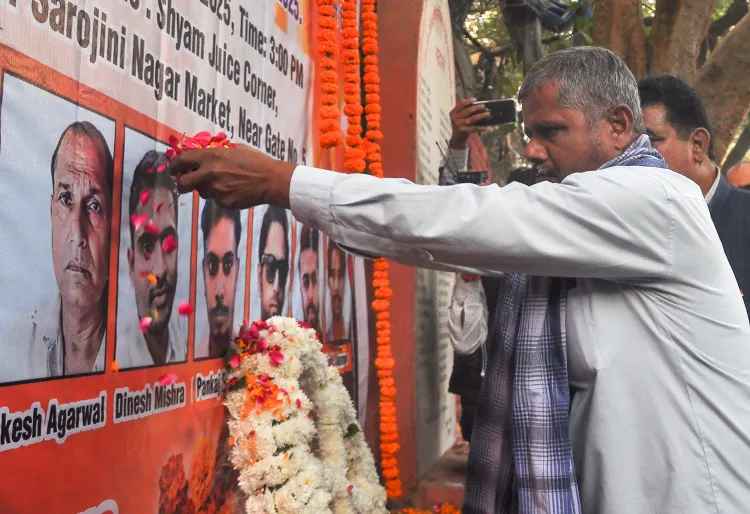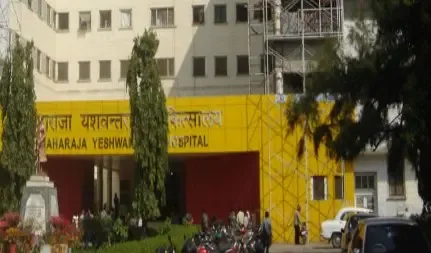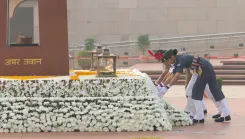Is the Red Fort Blast Linked to the Resurgence of Indian Mujahideen's Infrastructure?

Synopsis
Key Takeaways
- The Indian Mujahideen infrastructure is being exploited by groups like Jaish-e-Mohammad.
- Investigations into the Red Fort blast are uncovering links to terrorist networks.
- Mirza Shahdab Baig is a key figure in the ongoing investigation.
- The Islamic State may be influencing local terror activities.
- National security remains a critical concern as dormant modules awaken.
New Delhi, Nov 22 (NationPress) An October 2025 report from the Intelligence Bureau revealed that the Islamic State is exploiting the remnants of the Indian Mujahideen, which had been effectively dismantled over a decade ago, potentially connecting it to the recent Red Fort blast that resulted in 13 fatalities.
Although the Indian Mujahideen faced significant setbacks following the capture of its leader, Yasin Bhatkal, intelligence agencies have consistently warned about the possible reactivation of its dormant modules, indicating they might be co-opted by other terrorist factions.
As investigations into the Delhi Red Fort blast proceed, security personnel are examining possible ties with Jaish-e-Mohammad, which previously operated the Faridabad module, suggesting that they might be utilizing the outdated infrastructure of the Indian Mujahideen.
While no concrete evidence links the Indian Mujahideen directly to the Faridabad module, investigators believe that Jaish-e-Mohammad could have leveraged this infrastructure to acquire weapons and explosives.
Post the arrests of Bhatkal and his associates, many operatives of the Indian Mujahideen went underground, with some regrouping with other terror organizations. For instance, Shafi Armar, a former operative, aligned with the Islamic State in Syria after his group's downfall, becoming a pivotal figure in establishing operations in India.
After Armar's death in an airstrike, his wife, Rabiya, also known as Umm Osama, allegedly based in Oman, has been actively recruiting young individuals into the fold.
The Maharashtra ATS uncovered her involvement in a recruitment initiative, underscoring the threat posed by the Indian Mujahideen, once one of India's most perilous homegrown terror groups, notorious for its extensive network throughout the country, particularly in South India, Uttar Pradesh, and Bihar.
The ongoing investigation into the Delhi blast is delving into the avenues used by the suspects to obtain ammonium nitrate, with nearly 2,900 kilograms confiscated from the Faridabad module.
Authorities are now focusing on a former Indian Mujahideen operative, Mirza Shahdab Baig, who evaded capture and relocated to Saudi Arabia. Current suspicions suggest he may currently be in Afghanistan, collaborating with a Jaish-e-Mohammad faction.
A dossier from the Intelligence Bureau identifies Baig as an explosives specialist who procured ammonium nitrate for the Indian Mujahideen and is skilled in crafting IEDs using this chemical.
Initial findings in the Delhi blast investigation indicated that members of the Faridabad module were overseen by an individual from Afghanistan, with several members of the Jaish-e-Mohammad module, established in 2021, providing support.
Investigators believe that Baig's expertise may have been sought by the Faridabad module for operational assistance, as he possesses in-depth knowledge about the local procurement of ammonium nitrate.
Furthermore, the role of the Islamic State Khorasan Province (ISKP) has also surfaced, with Faridabad module members utilizing a combination of Triacetone Triperoxide (TATP) and ammonium nitrate to create explosives, a method favored by the Islamic State due to its accessibility for novices.
Officials suggest that Jaish-e-Mohammad may have leveraged both Baig's insights and those of the ISKP to source and fabricate explosives. Baig’s connections to Al-Falah University, where several doctors were implicated in the Faridabad module case, further complicate matters, as he was a former student and instructor there.
The police assert that despite his escape, Baig maintained contact with various students at the university, a vital connection that will steer the investigation towards a broader understanding of the situation. Close examination of the dormant modules of the Indian Mujahideen is critical, as their robust infrastructure may be appealing to multiple groups aiming to establish a fully operational homegrown terror organization in India.









